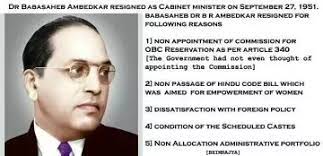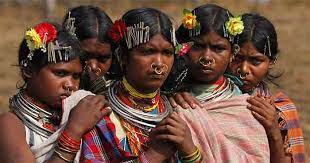What Dr. Ambedkar had done for the Backward Castes?

Dr. Ambedkar is often recognized as the saviour of Dalits, while he fought for the rights of all downtrodden classes, Dalits and Backwards. But because of the varna system, the backward castes that are Shudras consider themselves higher on the social ladder than the untouchables (Dalits). According to one definition, backward castes are Shudras, and Dalit castes are extreme Shudras.
By SR Darapuri
The only difference is that backward castes are considered touchable and Dalit castes are considered untouchable. It is also a historical fact that due to being touchable, the backward castes have been exploited more than the untouchables in some areas. It is also worth mentioning that the backward castes have been caught in the clutches of fanatical Hinduism while Dalits have been continuously rebelling against Hinduism. Due to the illusion of social superiority, the backward castes have been considering Dr. Ambedkar as the leader of the Dalits instead of their own leader. This is also because most of the backward castes have been under the influence of upper caste Hindus and they have been constantly misled about Dr. Ambedkar so that they do not establish unity with the Dalits by being influenced by the ideology of Dr. Ambedkar and do not create a big challenge for upper castes. Dalit and backward leaders are also responsible to a great extent for this distance between the Backward and the Dalits, who have been baking their bread by doing caste politics.
Now, if seen from the historical perspective, where Dr. Ambedkar struggled throughout his life for the rights of the downtrodden castes, he also fought continuously for the rights of the backward castes. This fact is confirmed by the following facts: –
- Maharaja Sayaji Rao Gaikwad of Baroda, who belonged to a backward caste, had a great contribution in Dr. Ambedkar’s higher education and he had given him a scholarship to study in America.
- Chhatrapati Sahuji Maharaj was the second backward caste person who helped and contributed to Dr. Ambedkar.
- Dr. Ambedkar had very good relations with Ramaswamy Naicker, who was the leader of the non-Brahmin movement in South India.
- Dr. Ambedkar was greatly influenced by the social ideology of backward caste social reformer Jyoti Rao Phule.
- Dr. Ambedkar supported the movement for the equality of Ezhavas, a backward caste, in Travancore (Kerala).
- It was Dr. Ambedkar who advocated reservation in government jobs for backward castes in the future constitution of India before the Simon Commission in 1928.
- Dr. Ambedkar, as the President of the Constituent Assembly, had included the word “backward” in Article 15 (4) of the Constitution regarding reservation in government jobs, which later became a base for reservation for socially and educationally backward castes.
- With the efforts of Dr. Ambedkar, a provision was made in Article 340 of the Constitution to establish a commission to identify backward castes.
- The political party that Dr. Ambedkar formed in 1942 was named Scheduled Castes Federation, it was mentioned in the policy that the party would give priority to the alliance with the parties representing the backward castes and tribes and if necessary, the party would Will change its name to “Backward Classes Federation” to represent the backward classes. Therefore, the party had also made an electoral alliance with the Socialist Party at that time.
- In 1951, when Dr. Ambedkar resigned from the post of Law Minister regarding the Hindu Code Bill, he said, “I would like to refer to another matter which is the reason for my dissatisfaction with this government. It is about the treatment of backward castes and scheduled castes by this government. I am sad that there is no protection for backward castes in the Constitution. It has been left to the government order based on the recommendations of the commission to be appointed by the President. It has been more than a year since we passed the constitution but the government has not even thought of appointing the commission.” From this you can guess how concerned Dr. Ambedkar was about the welfare of the backward classes.
- Addressing the students of Lucknow University after resigning from the post of Law Minister, Dr. Ambedkar warned about the neglect of the backward castes and said, “If they despair in their efforts to achieve a status of equality “Scheduled Castes Federation” will give preference to the communist system and the fate of the country will sink. It can also be estimated from this how much Dr. Ambedkar was trying for the benefit of the backward classes. He reiterated the point of neglecting the interests of the backward classes in a big public meeting at Nare Park in Bombay.
- Due to the pressure created by Dr. Ambedkar on the issue of backward castes, the Nehru government had to appoint the first Backward Classes Commission in 1951 under the chairmanship of Kaka Kalelkar. It is a different matter that the government did not accept the recommendations of this commission, rather the chairman of the commission was forced to give an opinion contrary to the recommendations of the commission for caste basis of reservation.
- Dr. Chhedi Lal Sathi, who was the President of the Republican Party of India, Uttar Pradesh in the seventies, told me that Babasaheb was very disappointed after resigning from the ministerial post in 1951. At that time backward class leaders Ramlakhan Chandapuri, S.D.Singh Chaurasia and others told him not to panic, we are all with you. For this purpose, they organized a rally of backward classes in Patna, in which a huge crowd gathered. Babasaheb was very impressed by this and again became active in the politics of Dalits and Backwards.
- In this regard, Dr. Chhedi Lal Sathi has written in his book “Situation of Dalits and Backward Castes”, on page 113 that “After coming back from Patna, Babasaheb dissolved the Scheduled Castes Federation of India in consultation with his colleagues. After losing the elections twice in 1952 and 1954, Babasaheb realized that the Scheduled Castes were only 20% of the population and so long as they did not have the support of 52% backward classes, he decided to form the Republican Party of India in its place. If he does not get it, he will not be able to win the election. Therefore; Babasaheb, in consultation with backward class leaders, especially Shivdayal Singh Chaurasia, etc., decided to include 52% backward class people and 12% population of Muslims, Christians and Sikhs in the Republican Party of India apart from 20% Dalit class. More than a year was spent in drafting and consulting the constitution of the Republican Party.”
From this point of view, this rally of Patna was historic because in this the foundation of unity of Dalits and OBCs was laid. Babasaheb announced the dissolution of the Scheduled Castes Federation of India on October 15, 1956, in Nagpur and the establishment of the Republican Party of India in its place. From 1957 to 1967, based on the unity of these classes, the Republican Party of India emerged as a major political force, but later the Congress, for which this party became the biggest threat, took advantage of the weaknesses of the Dalit leaders. Bought them and this party got divided into many pieces. A party like the BSP that emerged later also destroyed this alliance.
- In the last years of his life, Babasaheb also established contact with the leader of backward classes, Ram Manohar Lohia, etc. to establish the unity of Dalits and Backwards and there was correspondence between them. But unfortunately, Babasaheb died soon and that alliance could not be formed.
It is clear from the above description that Dr. Ambedkar not only fought for the interests of the Dalits but also for the interests of the backward classes throughout his life. It was due to his efforts that provision for reservation in government jobs for backward classes was made in the Constitution and due to the pressure created by him, the first Backward Classes Commission was constituted. Later the Mandal Commission was formed and the backward classes got reservations in government jobs and education, for which the backward classes should be indebted to Babasaheb.
Therefore, the backward class should accept Babasaheb’s contribution to their upliftment. There is a need to restore the unity of these classes in the context of the new challenges of the present. It is also true that there are some class contradictions between Dalits and OBCs and their unity cannot be established without resolving them. It is well known that Dalits, extremely backward (Hindus, Christians, and Muslims) are natural allies. This equation can be based on common issues and not on caste alone, which can face majoritarianism and Hindutva politics in the country.
R. Darapuri, National President, All India People’s Front
Courtesy : Counter Currents
Note: This news piece was originally published in countercurrents.org and used purely for non-profit/non-commercial purposes exclusively for Human Right







